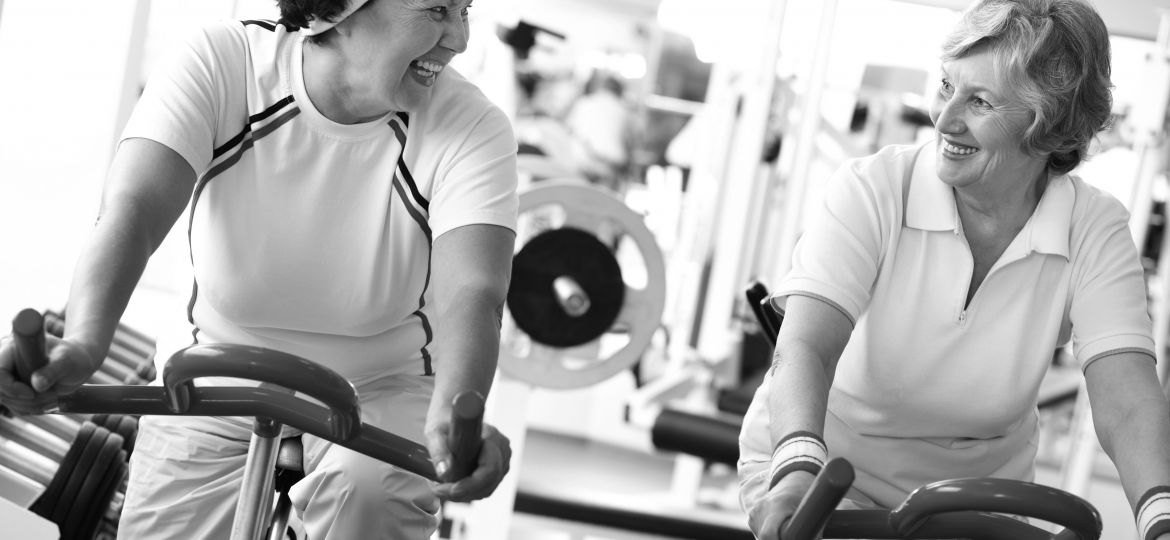Anxiety is one of the most common — and least discussed — Parkinson’s symptoms. Not only can anxiety result from the brain changes brought on by Parkinson’s, but worries about off-times, changing symptoms, as well as questions and fears about the future, can all lead to anxiety.
According to a 2014 study in Therapeutic Advances in Neurological Disorders, anxiety in people with Parkinson’s can exacerbate existing symptoms, as well as contribute to “significant impairments in areas of cognitive, functional, motor and social performance.” While feelings of anxiety should be a topic of conversation with your healthcare team, regular exercise can also help you manage everyday anxiety.
Exercise is Essential for People Living with Parkinson’s
A regular workout routine can:
- Strengthen your body
- Increase flexibility
- Improve your mood
- Boost your energy
Research has shown that people with Parkinson’s who exercise between two and three hours a week may even slow the progression of Parkinson’s. A comprehensive exercise routine typically includes aerobic or cardiovascular activity to boost your heart rate, along with flexibility and stretching, both of which are especially important if you experience stiffness in the muscles that flex arms, shoulders, hips, knees and ankles. Your exercise routine should also include strength training, which helps fight fatigue and increases energy, balance and fine movement control. Weight-bearing exercises like walking or jogging increase endurance, strength and bone density.
Exercise Boosts Emotions
We know that exercise helps overall health and wellness for everyone, but the benefits of exercise are more than just physical. A 2016 review in the Journal of Parkinson’s Disease confirmed that exercise could improve physical and mental health for people living with Parkinson’s. Investigators analyzed 106 studies conducted over the past 30 years to better understand the impact of exercise on people with Parkinson’s. In addition to increased balance, mobility and flexibility, exercise was shown to improve cognitive ability as well.
Exercise can improve your outlook as you navigate the daily ups and downs of living with Parkinson’s:
- Enjoy yourself. Many people discover that while engaged in an activity they enjoy, they become less aware of symptoms and experience a wave of relief from whatever anxieties may have been present prior to exercise.
- Involve both your body and brain. When both are focused on movement, the result can be quite an effective stress-reliever.
- Release those endorphins. Exercise triggers the release of endorphins — chemicals that produce a positive sense of wellbeing and can even reduce the pain and discomfort of some Parkinson’s symptoms.
- Get social. Finally, exercise can be a helpful social outlet. Exercising with a spouse, a friend or a group can provide a strong sense of connection and be a welcome distraction from the worries and concerns of the day.
Ready to get moving?
While exercise may not eliminate anxiety associated with Parkinson’s, it is a proven way to manage it. Find out how to get started, stay motivated and see results. For a range of workouts designed specifically for people with Parkinson’s, download and watch our Parkinson's Exercise Essentials video.



















Since I participated in a Cardio Competition at my Neurological Center… I have continued to exercise six days a week, riding Ten miles in 50 minutes on an exercycle followed by a half hour on other exercise machines at the YMCA. I feel like I’m 35 not 71 and all my PD motor symptoms disappear completely immediately after I exercise. Its key, I think, in the slowing down of the progression of PD. BTW I did “win” the Cardio competition. #2 wasn’t even close.
Frank, congratulations on your two big wins – the Cardio Competition victory and your decreased motor symptoms! It’s great that you’re keeping track of your exercise routine and reaping the benefits. It may be fun to track your routine on this Exercise Journal and see your progress!
I am amazed at the difference exercise makes with my tremors. Just today my right hand started shaking as I began my run. Within 30 minutes I had no tremor at all and 6 hours later I still do not have a tremor and only just now took any PD meds (mirapex and selegiline). I am sold on the theory that exercise and intermittent fasting are neuro-protective, and possibly neuro-regenerative. I try to not eat between 8pm and 12 noon the next day. No doctor could ever convince me otherwise – it’s totally changed my quality of life. I’m excited to bike the Copper Triangle for DPF and PPD. You all rock – thank you so much.
Patti, it’s great to hear that exercise is making a difference with your tremors. There really are so many benefits to exercise! You mentioned the neuroprotective aspect of exercise, so I thought you might want to look at this video, where Mike Studer, PT touches on just that. Let us know what you think!
Cycling is my primary method for managing the hand tremors and balance issues PD brings on. It’s better than increasing the dosage of pramipexole.
Happy to hear that cycling has been helping with your tremors and balance, Bill. If your looking for more exercises to add to your routine, take a look at our Parkinson’s Exercise Essentials video. It’s another great option for keeping those endorphins up and easing anxiety.
Rock Steady Boxing is a priority. It provides brain & body challenges, aerobic activity, connection with others. Pilates provides me with stretching, strengthening, balance help &the elliptical & stationary bike at the gym provide aerobic & again, being with others. Of course, not overdoing is also important for me.
I couldn’t agree more, Kathleen! Having a well-balanced exercise routine is essential for physical and mental durability. We always encourage people to get out there and find new classes or exercises that challenge our bodies. Way to go and keep moving!
PARKINSONS DISEASE
My husband was diagnosed of Parkinsons disease nearly 7 years ago, when he was 49. He had a stooped posture, tremors, right arm does not move and also a pulsating feeling in his body. He was placed on Senemet for 8 months and then Siferol was introduced and replaced the Senemet, during this time span he was also diagnosed with dementia. He started having hallucinations, lost touch with reality. Suspecting it was the medication I took him off the Siferol (with the doctor’s knowledge) and started him on PD natural herbal formula we ordered from NEWLIFE HERBAL CLINIC, his symptoms totally declined over a 3 weeks use of the Newlife Parkinsons disease natural herbal formula. He is now almost 57 and doing very well, the disease is totally reversed! (Visit their website www . newlifeherbalclinic . com)
Thanks for you story, Maggie! I applaud you for being active in finding the medications and treatments that worked for your husband. It is very important to keep an up-to-date log of how your medications are reacting in your body so you can accurately relay them to your doctor and adjust medications accordingly.